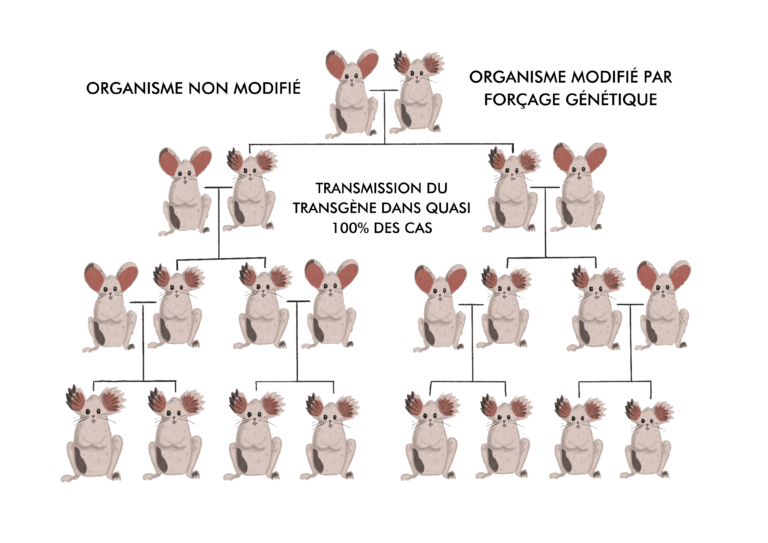Unintended effects, a controversial topic
The unintended effects of the implementation of genetic modification protocols were first of all refuted by the pro-GMOs before being recognized as common to any genetic modification process. But there is the frequent denial of such effects, demonstrated by the HCB Scientific Committee in a recent document (July 2020) [1], which has most impact on certain political figures. However, such effects are both real and specific, thus paving the way for the traceability of the new GMOs.
In 2016, the HCB Scientific Committee published a note stating that in the case of Crispr/Cas9 « several recent publications indicate that no off-target mutation was detected after using the technique« [2] or clearly indicating that for the modification techniques, ZFN, TALEN and Crispr, it is possible « to eliminate unintended mutations by successive crossings« [3]. Thus, without formally denying the existence of unintended mutations, The HCB Scientific Committee implied that such effects were minor.
The denial of off-target effects
In 2017, the Parliamentary Office for Scientific and Technological Assessment writes about Crispr, saying that « researchers (…) manage to avoid practically all effects outside the desired site (…) and the high specificity of these systems is such that there is no cause for concern« [4]. But, for the GMO promoters, it is important to add that, whatever the possible effects, they cannot be differentiated from other mutations. Thus in 2014, during a conference by the International Life Sciences Institute (ILSI) on unintended effects, it was asserted that « no system for genetic modification, including conventional methods of plant breeding, is without unintended effects« . The HCB Scientific Committee added in 2016, that « non-targeted mutations (…) can probably not be differentiated » from other mutations [5]. The opinion can be resumed by its inherent paradox : there are no undesired effects, such as unintended mutations, with the new techniques of genetic modification but, if ever there were any, we would not be able to differentiate them from other mutations !
The experts do not advance blindfold
Nonetheless in 2019, the European network of GMO-detection laboratories addressed the issue of the use of such unintended effects resulting from unwanted mutations. One researcher explained at this meeting that it is in fact « impossible to distinguish between a mutation introduced by genome editing and a naturally occurring mutation » if only the mutation itself is examined. But, and the implication is enormous : « accessory information (Editor’s note : obtained by more complete sequencing for example) such as somatic mutations may be collected on a global scale to differentiate between the two cases« . This set of generalized mutations, acting as a matrix, could act as « unique fingerprinting of authorised events« [6]. After having been refused in 2017 by the European Commission, a taskforce within the European network was finally drawn up and is to present a report on the subject in 2020. The United States themselves have just taken account of the reality of unintended modifications in its guidelines for genetically modified animals. Companies must now inform of « off-target alterations, unanticipated insertions [i.e. of nucleotides], substitutions [i.e. mutation], or deletions » ! In particular, UPOV, l’IAEA and the Fao, as well as ISO standards have, in recent years, published work or guidelines on the characterization of varieties and mutant germplasms using such signatures [7].
Backcrossing – the ultimate tool ?
In 2016, the HCB Scientific Committee noted that « in plants, it is possible to eliminate undesired mutations, by successive crossing« . However, the possibility of eliminating 100% of off-target effects by backcrossing is seriously questioned in a number of scientific papers [8]. Yves Bertheau gives a well-documented explanation that such backcrossing cannot eliminate all the unintended effects [9]. According to him, on the contrary, « most of the changes intentionally or unintentionally (…) are transmitted to their cells offspring thus allowing the identification of products and techniques to their origin« . The incapacity to clean the whole genome depends on the variety or species concerned, whether by vegetative reproduction, the size of the genome, the proximity of the sequences of the desired feature and the modifications to be eliminated, or even by the existence of vast chromosome regions that force their presence during gamete formation…













